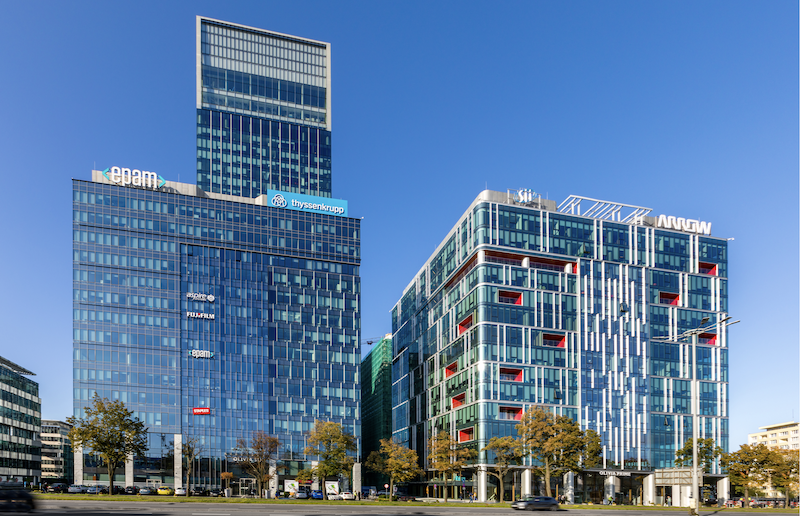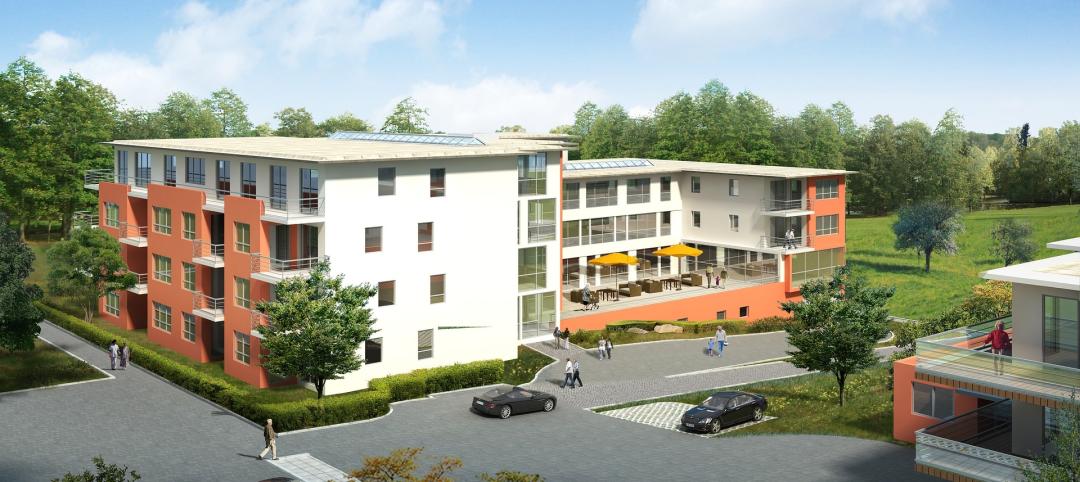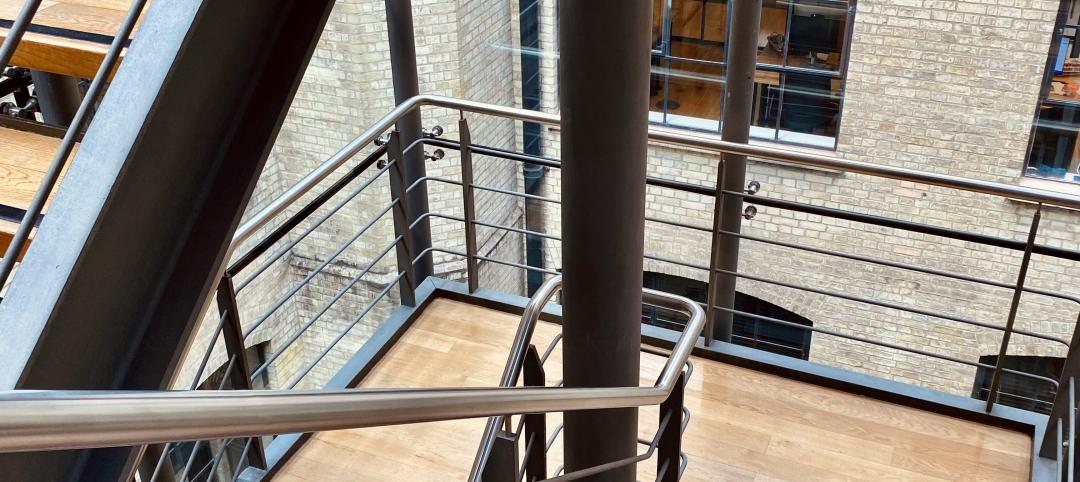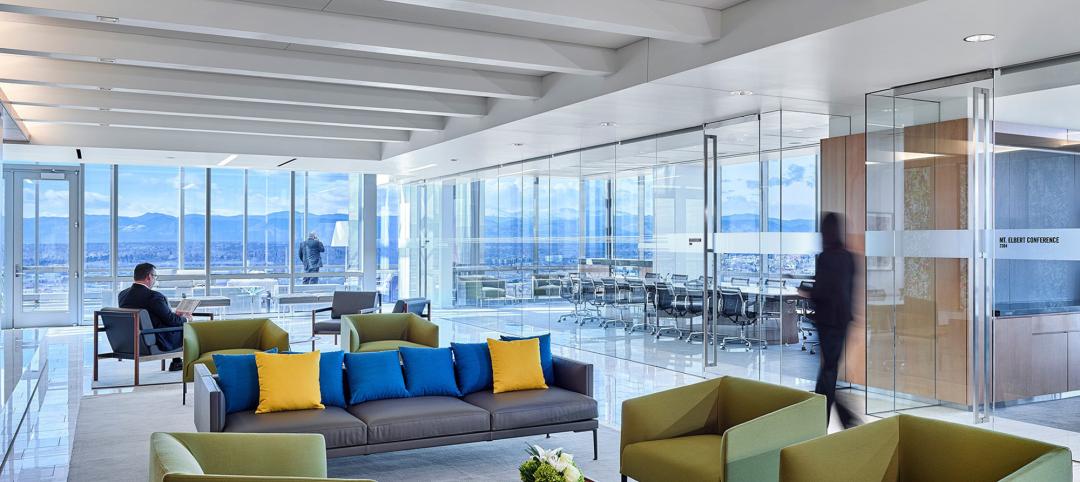The largest office complex in northern Poland is the first building to receive the highest WELL Health Safety Rating, as audited by the International WELL Building Institute (IWBI).
The Olivia Business Center, located in Gdansk, is the complex, with 230,000 sm (2.48 million sf) of office space within eight completed buildings. Olivia Building Center has been expanding since 2010. More than 8,500 people work at Olivia, whose tenants include Amazon, Bayer, PwC, and ThyssenKrupp.
The contractor for the construction of each building has been Pekabex, a leading precast concrete manufacturer. Konior and Partners developed the complex’s architectural concept, which has been continued by Gdynia-based BJK Architekci Studio. The complex’s primary investor is Maciej Grabski, cofounder of Wirtualna Polski (Virtual Poland), one of the country’s big media companies.
A LOCAL DOCTOR HELPS DEVISE SAFETY PROTOCOLS
A spokesperson for Olivia Business Center tells BD+C that the decision to make the buildings healthier stemmed from discussions, in February 2020, with Professor Krzysztof Korzeniewski, MD, Ph.D, the director of the Department of Epidemiology at a regional hospital. Korzeniewski assisted in developing procedures and planning to protect the buildings’ occupants from COVID-19.
The Olivia Business Center is one of the first complexes in the world to install ion air purification technology in its buildings. The devices saturate all internal areas with ventilated air that contains ions capable of destroying viruses, bacteria and other pathogens. The filters in the air handling units were raised to F7 from G4, and sensors for pollution and particulate matter were installed. The intensity of the air exchange in the buildings is controlled based on real-time CO2 measurements.
To maximize tenant safety, key-card sterilizers were installed, and elevator settings changed so that lift cabins stay open while in stay-by mode.
Elevators were among the common areas (including lobbies and access paths to parking lots) to which an active titanium coating was applied to ensure surfaces that are touched often are free from pathogenic organisms. The coating—developed by Lumichem and scientists at Jagiellonian University—eliminates bacteria, fungi, and viruses that come into contact with surfaces, and breaks down their residues into carbon dioxide and water.
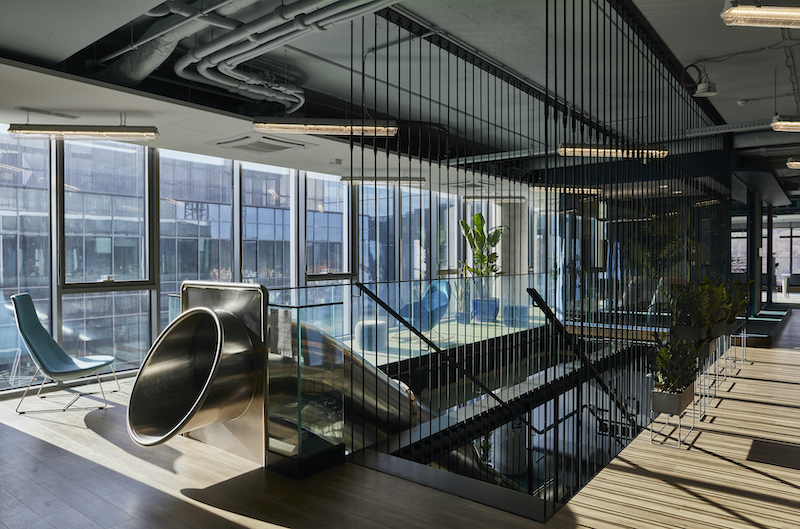
Ventilation upgrades were among the improvements made to Olivia Business Center.
A PERFECT SCORE
To achieve its score of 25 out of 25 from IWBI (which launched its rating system last January), Olivia Business Center also made some structural changes to windows and façade in all of the buildings. Inside, occupants are directed by signage to walk in one direction to comply with social distancing guidelines. The frequency of the buildings’ cleaning regimen was increased. Cigarette sales are banned. And the building’s owner organizes free and open-to-everyone healthy activities for occupants, which include Nordic walking, cycling, or yachting excursions on the Baltic Sea.
“The safety and quality of life of our tenants are an absolute priority for us, which is why we were happy to undergo such a thorough and extensive certification process that prioritizes the comfort and well-being of our tenants,” said Konrad Danecki, head of Olivia Business Center’s utilities department, in a prepared statement.
The Center did not disclose the cost of these changes.
Related Stories
Office Buildings | Sep 5, 2024
Office space downsizing trend appears to be past peak
The office downsizing trend may be past its peak, according to a CBRE survey of 225 companies with offices in the U.S., Canada, and Latin America. Just 37% of companies plan to shrink their office space this year compared to 57% last year, the survey found.
Codes and Standards | Sep 3, 2024
Atlanta aims to crack down on blighted properties with new tax
A new Atlanta law is intended to crack down on absentee landlords including commercial property owners and clean up neglected properties. The “Blight Tax” allows city officials to put levies on blighted property owners up to 25 times higher than current millage rates.
Resiliency | Sep 3, 2024
Phius introduces retrofit standard for more resilient buildings
Phius recently released, REVIVE 2024, a retrofit standard for more resilient buildings. The standard focuses on resilience against grid outages by ensuring structures remain habitable for at least a week during extreme weather events.
Products and Materials | Aug 31, 2024
Top building products for August 2024
BD+C Editors break down August's top 15 building products, from waterproof wall panel systems to portable indoor pickleball surface solutions.
Building Technology | Aug 23, 2024
Top-down construction: Streamlining the building process | BD+C
Learn why top-down construction is becoming popular again for urban projects and how it can benefit your construction process in this comprehensive blog.
Adaptive Reuse | Aug 22, 2024
6 key fire and life safety considerations for office-to-residential conversions
Office-to-residential conversions may be fraught with fire and life safety challenges, from egress requirements to fire protection system gaps. Here are six important considerations to consider.
Government Buildings | Aug 19, 2024
GSA posts new RFI for enabling energy efficiency, decarbonization in commercial buildings
The U.S. General Services Administration (GSA), in collaboration with the U.S. Department of Energy, recently released a new Request For Information (RFI) focused on enabling energy efficiency and decarbonization in commercial buildings. GSA wants to test innovative technologies through GSA’s Center for Emerging Building Technologies.
Curtain Wall | Aug 15, 2024
7 steps to investigating curtain wall leaks
It is common for significant curtain wall leakage to involve multiple variables. Therefore, a comprehensive multi-faceted investigation is required to determine the origin of leakage, according to building enclosure consultants Richard Aeck and John A. Rudisill with Rimkus.
Adaptive Reuse | Aug 14, 2024
KPF unveils design for repositioning of Norman Foster’s 8 Canada Square tower in London
8 Canada Square, a Norman Foster-designed office building that’s currently the global headquarters of HSBC Holdings, will have large sections of its façade removed to create landscaped terraces. The project, designed by KPF, will be the world’s largest transformation of an office tower into a sustainable mixed-use building.
Office Buildings | Aug 8, 2024
6 design trends for the legal workplace
Law firms differ from many professional organizations in their need for private offices to meet confidentiality with clients and write and review legal documents in quiet, focused environments


